| Revista Umělec 2011/1 >> In transition or Where the Ruined and Other Dreams May Lead | Lista de todas las ediciones | ||||||||||||
|
|||||||||||||
In transition or Where the Ruined and Other Dreams May LeadRevista Umělec 2011/101.01.2011 Alena Boika | in transition | en cs de |
|||||||||||||
|
It was the second event of In Transition—an international project with an exhibition and a symposium—which brought me to Yekaterinburg. As it is clear from the title, the project addresses the problems of displaced people, i.e. migrants, refugees, repatriates. The participants are selected through an open online contest and approved by Helene Black and Sheila Pinkel (the founders of NeMe, an independent arts organization based in Limassol, Cyprus). The first exhibition took place in Cyprus in October 2006. The second event of the project entitled, In Transition Russia was organized in Yekaterinburg and Moscow in autumn 2008. Being themselves displaced peoples, the organizers were inspired by Carole Kismaric’s Forced Out: the Agony of the Refugee in Our Time (1989). The publication of the book was followed by a big exhibition, which then travelled from one place to another. The number of military conflicts, natural cataclysm, economic and political crises that have happened since then and continue to happen is big enough that the number of displaced people continues to grow dramatically. Sometimes I think that the biggest part of the world population in fact consists of us, the displaced people. This is why, though the described events are a matter of long standing documentation, I consider the problems addressed by the project and, mainly, the people who speak about these problems in their works, to be a timeless and important subject.
Some may say that in this contemporary world of globalization, acceleration etc. physical displacement is not something extraordinary and migrations constitute a natural part of these processes. But still the most frequent messages that people pronounce or text today are, “Where are you?” and, “I am lost.” These phrases are not connected and the second one is not an answer to the first one. We ask those close to us and those who are farther afield where they are, trying to determine the coordinates of our own metaphysical location. What unites us all is the fear of chaos that emerges from the growing acceleration of our time and the impossibility of accepting and processing more and more information. In this transition and migration, the processes of simplification and the inter-penetration of languages is not something contradictory or extraordinary. On the contrary, it seems to be natural. The majority of the world population, it would appear, has been allowed to migrate or has been forced into migration through military, natural, or cultural cataclysms. Material things dwindle, memorials vanish. Human-beings who learnt the structures of their community in their childhood, would first try to find a corresponding community or to build something that would look like home. For this he would use his lost and newly acquired situations, images, smells, and words as if they were but pieces of LEGO. The attempts are unavailing even though the superficial success may look really convincing. The world of arts immediately offers an apt illustration: Nathan Sawaya who made a contrabass-looking stringed instrument of LEGO Cello pieces, confesses that while it is possible to play this instrument, the sounds will be far from being music. As an emigrant who has been trying to integrate into a foreign culture I have a natural affinity to such statements. The things that develop and, unbelievably, intensify in this forced integration are individualism and personalization, an attempt to understand and accept foreign culture through the prism of my own culture, which, as time goes by, diffuses and loses its material significance. At first, a ‘displaced individual’ seeks salvation in their language, but the language loses its flexibility and plasticity, becomes simpler and gets depleted and, at the same time, fills with foreign words and intonations. Once I began to hear everything, the world around burst with words and meanings, and meaningless words. The thump that failed to penetrate my consciousness limited by the muddy walls of incomprehension all of a sudden rushed as an avalanche inside the broken aquarium. And all the revived and dead gold fish of foreign and my own forgotten words began to pour around and above. Starting from that moment when every sentence pronounced behind my back either in English or Czech suddenly became clear, that carrousel began, in which consciousness in chase of itself tries to seize by the tail its own eluding “means of expression.” The language, its initial verbal and textual version becomes limited. Distressing and flat understanding of the fact pushes a human being to desperate attempts to find salvation in visual expression (visuality). Unfortunately, universalism of a visual language, in which the images do not demand any textual accompaniment and speak for themselves, is not applicable to contemporary art, where an unread text prepared by an artist or a curator would often make understanding of a work either impossible or defective. So the “pure visual meaning” shows itself as a pure bashful fiction. And so, all the ‘displaced individual’ now possesses is his own consciousness and memory, which he turns inside out in his attempts to adjust to the surroundings, which will never become their natural home in spite of all the attempts to move closer to it. Still these attempts in various forms of creative despair are beyond doubt interesting for an inquiring researcher. Being just such a researcher, I have taken a long journey through the texts, pictures, and fates of In Transition. Below are only some of them. I should specify that I would never criticize any project or work because the majority of them are autobiographical dramas, which artistically express the different degrees of despair. It is more appropriate to rest upon the works by some artists and researchers, which can illustrate the forms of thoughts, reflections, feelings, tragedies, and research united by the common name In Transition. An odd creature among the flowers and grave-stones The big eyes looked at me from the picture, that despite an exuberant mass of vegetation (moustache and beard), undoubtedly belonged to woman. The eyes shined with a heavy dark light stuck in an embarrassing situation: the photo was taken at a cemetery. Thus I got to know Monira. Monira Al-Quadri was born in Dakar, Senegal, in 1983. Influenced by her mother, herself a famous writer and artist, she began to draw early and at the age of six, she received her first award. When she was seven, she experienced the Gulf War. In school, she was absorbed in Japanese culture, especially, animation. The result of that was a personal exhibition organized in Kuwait in 1999. The Ministry of Education valued her work highly and Monira received a special grant for studying in Japanese. Her graduation work in 2007 was a series of animated films Visual Violence and was awarded with the Prize of Excellence. This year, Monira graduated from the Tokyo University of Fine Arts and Music (postgraduate studies in New Media Art) and came back to Kuwait. Monira Al-Quadri in her own words, “As an Arab, I had always found myself in the middle of a cultural identity crisis, so I decided to live in the country farthest away from my own I could imagine: Japan. As a woman I had never felt comfortable in my own skin, so I always tried to look more masculine than I am, even going as far as dressing up like a man. When I experienced war as a child and first encountered death, I lost faith in conventional systems of morality and created my own beliefs.” A photo Monira made at a Japanese cemetery, which I come back to view again and again, shows Monira posed and dressed as an Arab man. The same motif continues in many works by Monira. For example, in a movie Wa Waila (Oh, Torment) (2009) Monira sings a sorrowful song by Abdul Wahab Al Rashid about love and passion. The song sounds special due to the mixture of sexual and social roles of the participants who have thick onstage make-up and wear markedly theatrical costumes. A folk song, which is traditionally to be sung by male singers, sounds like mockery issuing the artist’s mouth. The roles of the dancing girls are played by the made-up men. The search for her own identity leads the artist to create a mixture of simple and fundamental subjects; using death, male and female nature, and violence. The subject of violence, particularly, is present in many of her works. Monira works in a range of genres from animation and painting to photography so that she is able to create the main characteristic of her works which is a mixture of Arab cultural traditions with Japanese techniques; this is especially notable in her animation. A light silhouette with heavy luggage on a background of an eluding landscape Unlike to Monira, where one can see a very strong influence of Japanese culture, Adam Buzcek, who had come to London to study and never left, admits with irony that he, “has to carry the conceptual luggage of his education in field of the photography he studied in Poland.” Adam utilises the mediums of video-installation, interactive objects and sculpture. But my attention was attracted by a project which was more discreet from the technical point of view and in which I found more poetic expressiveness than in complicated 3D constructions. Partly it happened due to a consonance to my own ideas and images. Torn Out is a series of photographs, in which people are cut from the landscape. Instead of the person, there is a black silhouette on the picture. I was impressed by such a coincidence in sensation. Once when I came back to Belarus after a long absence a friend of mine said: “You look so strangely here, like you was cut of with scissors, and just glued on a landscape.” It was strange, - I felt some distance, but the landscape wasn’t hostile, just a bit alien, and pertains to someone else’s, as could be alien only the place, where one couldn’t come back anymore. My plane got broken on the mirror of a landscape. Landscape observation is the favourite occupation of Nana Varveropoulou. She was born in Greece, Athens in 1977, and like Adam Buczek came to London to study. As in the previous case I got interested in a project that is not so typical for the artist, and more reflects the past, than to the present. At Home photo project emerged from a story of several Greek Cypriots who returned to visit the places where they were born, after 30 years in exile. Being afraid to find the houses and villages deserted or ruined they often saw that Turkish families that lived in their former houses looked after them carefully. They also found that many of their things were still used and even were in the same places where the hosts had left them 30 years ago. I must admit that I didn’t know so much about the Cyprus conflict, but just these simple facts Nana used in her art project made it for me more tangible, rather than researching a long boring article in a history text book. Homeland Lost Comparing to Nana Varveropoulou’s work, military conflicts and refugees are the main topics for Alan Gignoux. Unlike the previous authors, Alan Gignoux neither looks for his own identity nor reflects on his memorials. He is a photographer who deals with the social problems of people in the Third World. Homeland Lost is a photographic essay that juxtaposes portraits of individual Palestinian exiles and their families with present day images of the places they left in 1948 because of the war, which resulted in the creation of Israel. The idea emerged when Alan worked as a journalist in Beirut and as a teacher for the children in a refugee camp in Lebanon. The majority of people know about the Israeli-Palestinian conflict, they read newspapers and watch TV. They get used to it and their reaction is not strong when they watch sorrowful women in black who sob on the coffins of their relatives or mournfully hold aloft their portraits. It is hard to move someone by the images of dusty unshaven men shaking their weapons and screaming out something in Arab. Even the most objective news reports picture Palestinians as the victims or the terrorists, proud and courageous, but still oppressed. But how many people in the world know what happened in 1948? Where do the Palestinian complaints come from? The project aims to return to 1948, when 800,000 men, women, and children were exiled and over 500 settlements were ruined in order not to allow these people to come back. Homeland Lost aims to give a voice to those people whose history was changed and rewritten in 1948-60 and to hope that their voices will be heard. Make it up for us Like the artist mentioned above Oscar Gil is not a refugee or forced migrant. He is an example of a successful scientist from Santa-Barbara (US) that is now moving here and there following study programmes and scholarships. The project ‘Guatemalan forced migration: the politics of care in representing refugees’ was realized together with his brother, photographer Manuel Gil in 2008. The project’s idea is to show in what way suitable photos of migrants are created, the main aim of which is to provoke compassion in the viewer. Thus on the first photo the participants are posing in a way they would like to be seen by themselves. On the second one they are re-presented as they would be portrayed in the humanitarian and mainstream media. Without face If the Gil brothers research how to portray people in ‘the best’ way, the heroes of Mark Salvatus’ project Wrapped don’t have faces at all. The artist came to Seoul from the Philippines, where he was invited for a 3 month artistic residency by the National Art Museum. The project is about the Philippine migrant workers who have to survive being far from their families left in the Philippines. Hyewa-Dong is a Korean ‘Little Manila’, where the Philippines gather behind the Catholic Church every Sunday; they eat, talk, sell Philippine goods, and have a chance to make a cheap phone call to talk to their families. The artist talked to many workers, listened to their stories about life and work in the foreign country. He found out that many of them worked illegally or exceeded the term of the residents permit. It is hard for them to return to the Philippines because they have no opportunity there to earn a living for their families. Upon their agreement, the artist made dozens of portraits, but the faces are hidden behind the masks of a cyclic pattern, which symbolizes some belonging to the national community and, at the same time, enforced loss of personification. I am not stupid, I am a Korean The problem of migration in relation to the securing of professional working contracts is also the subject for Mi Hyun Kim from Korea. She says that when she first came to America she sincerely wanted to communicate better. She believed that in America there should be a lot of people from other countries who felt uneasy because of their poor English. Mi hung a poster on a wall in her suite and the next morning a laboratory technician asked if she had time for a talk. The technician confessed that she entered the suite in the morning and, having noticed the poster, began to think that she was the one who had made Mi suffer from such a feeling. Mi was happy to see that the utmost expressiveness of her work had an immediate impact. The same question about normality and stupidity or madness is raised by Simon Chang, who came to make his study at the Prague FAMU from Taiwan. From 2005 to 2008, he worked on the series called They in Bohnice, a psychiatric hospital in Prague, one of the biggest hospitals of Central Europe. “I spent about two years trying to capture the moments of life and condition of the patients of the ward no. 2, who suffered from chronic depression. I have always left in doubt the opinions of those who think that they have a right to determine the ambivalent border between madness and normality,” Simon commented. In his photographic research he tries to determine his own place in western society, in which the notions of “normality and madness” differ from the values and norms of oriental art. All that we’ve been so long dreaming about The romanticism of the east fills the project by Elly Clarke, an artist from the UK who now lives in Berlin. Due to her permanent move Elly can’t be called a, “displaced person,” but compensates by engaging in large-scale expeditions. One of them is a romantic’s dream—the Trans-Siberian Railway. The artist not only traveled from A to B by this historic line and made photos, which anyone could do, but she engaged ten fellow travelers. She gave them cameras and suggested that they make photos of anything they would consider interesting and important. The artist smiles, “Out of 10 cameras I only received back four, but there were wonderful photos.” To collect funds for this project and to visit the Trans-Siberia Conference, where she had been invited in 2005, the artist organized a preliminary sale of her photos, which she committed to make twice a day at 10 a.m. and 4 p.m. during all ten days of travel. Later, this part of the project was titled Ebay Alternative Funding Strategy and was exhibited in the galleries of Canada, England, New York, and, recently, in Berlin. Black-and-white drops, and the train has gone Trains are also admired by Sylvia de Swaan, who was born in Romania, survived through the Holocaust and moved with her parents to the US, all by the age of ten. Even if trains are not physically present on her rainy coloured photos, it seems they are flashing by, or the pictures were taken from a window of some passing train. The series of photos Return, as with most of Sylvia’s works, investigate our personal sense of memory and the ways in which it changes over the course of time. The artist started to work on it in the early 1990’s, when travels around former Soviet camps became possible. Working on this for ten years, she tried to retrace the routes her family traversed as refugees. The world they left behind - the world of bombed out cities, trains and refugee camps, its smells and sounds and cultural values - had little context or relevance in the new life they entered. Demolition vs Gentrification Emma Wilcox also lives in the USA. She though had to leave her house, but not because of any war. She got to know from her own personal experience what the reality of the innocuous term gentrification means for those caught up in its inexorable move towards apparent betterment. I am not sure she cared so much about the problems of people kicked out of their houses before her own experiences. Gentrification—the rehabilitation and settlement of decaying urban areas by middle and high income people. Beginning in the 1970s and 1980s, higher-income professionals, drawn by low-cost housing and easier access to downtown business areas, renovated deteriorating buildings in many cities, reversing what had been an outmigration of upper-income families and individuals from many urban areas. This led to the rebirth of some neighborhoods and a rise in property values, but it also caused displacement problems among poorer residents, many of them elderly and unable to afford higher rents and taxes. (The Columbia Electronic Encyclopedia Copyright © 2004, Licensed from Columbia University Press) When I asked my colleagues if they had ever heard the term Gentrification, only one of them, an American, answered the question quickly. Still all of them knew about Racial Segregation. It proves that everywhere in Europe and, in particular, in Prague, all of us who experienced the phenomenon of Gentrification as our editorial office was dispossessed in 2006 do not connect these two terms. The connection nevertheless exists, despite the absence of a class, or minimal presence as a sort of politically correct Afro-Americans of European origin and residence. Instead we have Gypsies and other weakly protected stratums and nations. More often, we use the more common and direct term Demolition, which was the title of the last festival of performance conducted by Martin Zet in the studio of his father, which the town council decided to take away. In America, especially in its part, which is featured in Emma’s projects, that is Newark and NJ, the people are familiar with Gentrification very well. We have to use this term more and more often in the everyday life. In a clearly idealistic way I wish to believe, that memorisation will synchronise with a realisation of necessity to change something - not to use it at all. In conclusion Comparatively recently we’ve learned that the tectonic plates, which comprise the Earth’s surface, move continuously. This brings to earthquakes, as a rule, at the joints of the plates. The scientists say that it is very possible that such country as, for example, Turkey may disappear from the map as well as other beautiful countries. The ocean will flood the banks and the snow will fall in the deserts. We know all that and we can analyze and research as long as we wish. But we can’t stop the plates’ move. Studying In Transition phenomenon is an extremely interesting thing. This phenomenon has an endless range of displays and never ends. It is present everywhere and people with their beautiful diversity of languages, skins, and consciousnesses distorted with migrations appeal an investigative scientist. But the plates move. And understanding the phenomenon and enjoyment caused by this understanding on the way toward it still/and never can make them stop. One can also say, for example, that, as a rule, migration results in narcissism or ego-centrism, if the case is individuals, or formation of overdone community spirit and national/ethnic belonging in case of migration of the big groups of people. But I don’t know what to say about over 100,000 refugees who left Kyrgyzstan during three days as a result of Kyrgyz aggression against the Uzbek ethnic groups. Besides, the economic factors can explain but not justify violence. Translated from Russian by Luba Sirina.
01.01.2011
Artículos recomendados
|
|||||||||||||
|
04.02.2020 10:17
Letošní 50. ročník Art Basel přilákal celkem 93 000 návštěvníků a sběratelů z 80 zemí světa. 290 prémiových galerií představilo umělecká díla od počátku 20. století až po současnost. Hlavní sektor přehlídky, tradičně v prvním patře výstavního prostoru, představil 232 předních galerií z celého světa nabízející umění nejvyšší kvality. Veletrh ukázal vzestupný trend prodeje prostřednictvím galerií jak soukromým sbírkám, tak i institucím. Kromě hlavního veletrhu stály za návštěvu i ty přidružené: Volta, Liste a Photo Basel, k tomu doprovodné programy a výstavy v místních institucích, které kvalitou daleko přesahují hranice města tj. Kunsthalle Basel, Kunstmuseum, Tinguely muzeum nebo Fondation Beyeler.
|







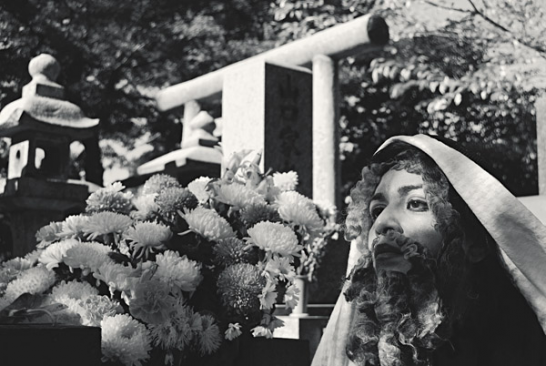
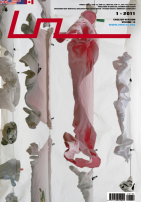






















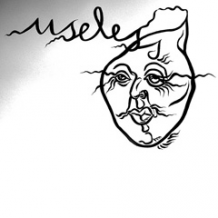






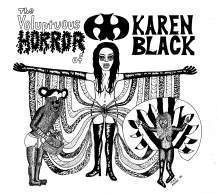




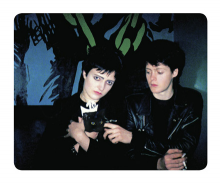
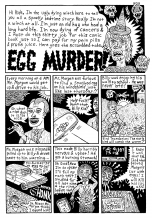
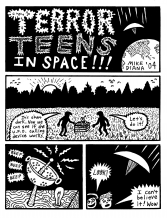
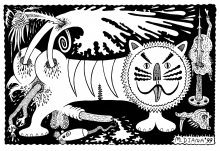


 New book by I.M.Jirous in English at our online bookshop.
New book by I.M.Jirous in English at our online bookshop.
Comentarios
Actualmente no hay comentariosAgregar nuevo comentario